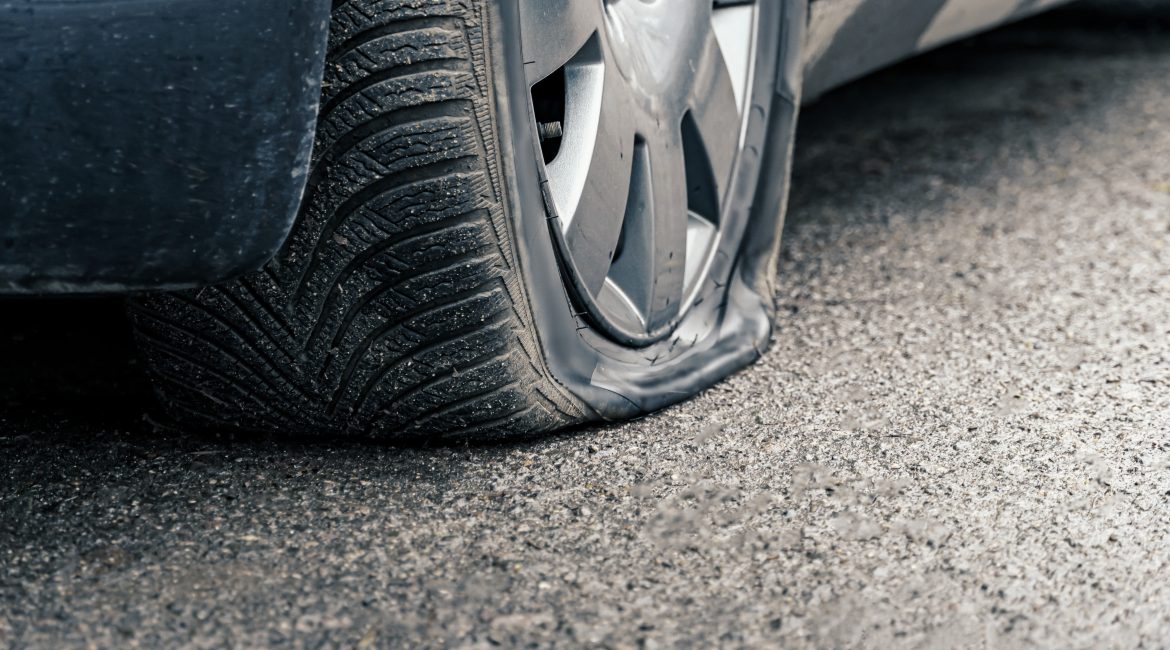Heading out on the open road, letting the excitement build as you make your way to your holiday destination. Are you prepared though? Can you change a flat tyre? Have you thought about what you need in case something goes wrong?
Ah, December – can you smell the freedom? There’s nothing quite like winding down for the year and taking a much-needed break from work. What better way to take a break than to head out on a road trip?
Road trips are quite literally a mini adventure before you reach your holiday destination. Before heading out, you need to make sure you’re prepared for anything that could possibly go wrong.
One of the biggest concerns when heading on a road trip is the dreaded flat tyre, and if you’re anything like us, changing a flat tyre is not in your repertoire – until now.
What you need to know about a flat tyre
There are a couple of things you can do to avoid getting a flat tyre and then sometimes they’re just impossible to avoid and you need to be prepared. We’re diving into what to do before your road trip to keep your tyres in good health and what to do in the event of a flat tyre.
Before you hit the road
1. Check your tyre quality and tread
Did you know that shallow or smooth tyre tread make it difficult to control the vehicle in wet weather and put your vehicle at high risk? Tyre tread is the rubber part of the tyre that has a groove-like pattern, this part of the tyre is what touches the road’s surface.
Make sure your tyre tread is not less than 1mm across the tread surface at any point on the tyre.
Read this: 4 Issues Tyre Rotation Can Help You Avoid
2. Take your car to be checked by a professional
It’s always a good idea to take your car in for a little health check before heading out on the open road. Head on over to your nearest tyre experts and get your wheel alignment and balancing assessed as well as the overall ‘health’ of your tyres. Tyres with low tread or that are not aligned are at a higher risk of getting damaged on long trips.
This health check doesn’t stop at your tyres though, get your entire car checked to make sure it can handle a road trip.
3. Have a backup plan
You never know what can happen on a road trip so it’s always better to prepare for the worst. Make sure you’re prepared with a spare tyre. If you have one already, check it out before heading on the road and make sure it’s got a decent tread and isn’t deflated. What good is a spare if you can’t even use it?
4. What tools do you have?
While you’re checking in on your spare tyre, make sure you have an emergency toolkit, too. If you happen to get a flat tyre, having a spare won’t do you any good if you don’t have the tools to change it.
Here’s what you need:
- Tyre lug wrench
- Jack
- Wheel wedges
- Gloves (not always completely necessary but helpful to have)
- Flashlight (just in case you get a flat in the dark)
You have a flat tyre, now what?
Now that you’re properly prepared, you also need to know what to do exactly in the event that you do get a flat on your way to or from your holiday destination.
What you need to do is:
- Position the wheel wedges at the base of the tyres to keep your car from rolling backwards. (Top tip: if you’re changing a front tyre, place the wedge at the base of both back tyres and if you’re changing the back tyre then place them in front of the front tyres).
- If you have one, remove the wheel cover or hubcap from your flat tyre.
- Loosen the lug nuts on your flat tyre using the lug wrench by turning them counter-clockwise.
- Use the jack to lift the flat tyre about 15cms off the ground and then remove the lug nuts.
- Hold onto the tyre on either side and pull it toward you to remove it.
- Get your spare tyre and insert it by aligning the tyre rim with the lug bolts.
- Replace the lug nuts and turn them clockwise until they are tight.
- Lower your car until the tyre touches the ground (but make sure it doesn’t yet support your car’s full weight).
- Tighten the lug nuts with the wrench once again.
- Now you can lower your car completely and remove the jack.
It’s a good idea to drive carefully to the nearest petrol station to check the spare tyre’s pressure to make 100% sure that it’s safe.
Read next: 9 Essential Summer Car Care Tips
Flat tyres are more common than you may think and it’s definitely better to be prepared than to think “Ah, that won’t happen to me.”
We hope you have the best holiday, safe travels!
Your Insurance Family,
Oneplan




